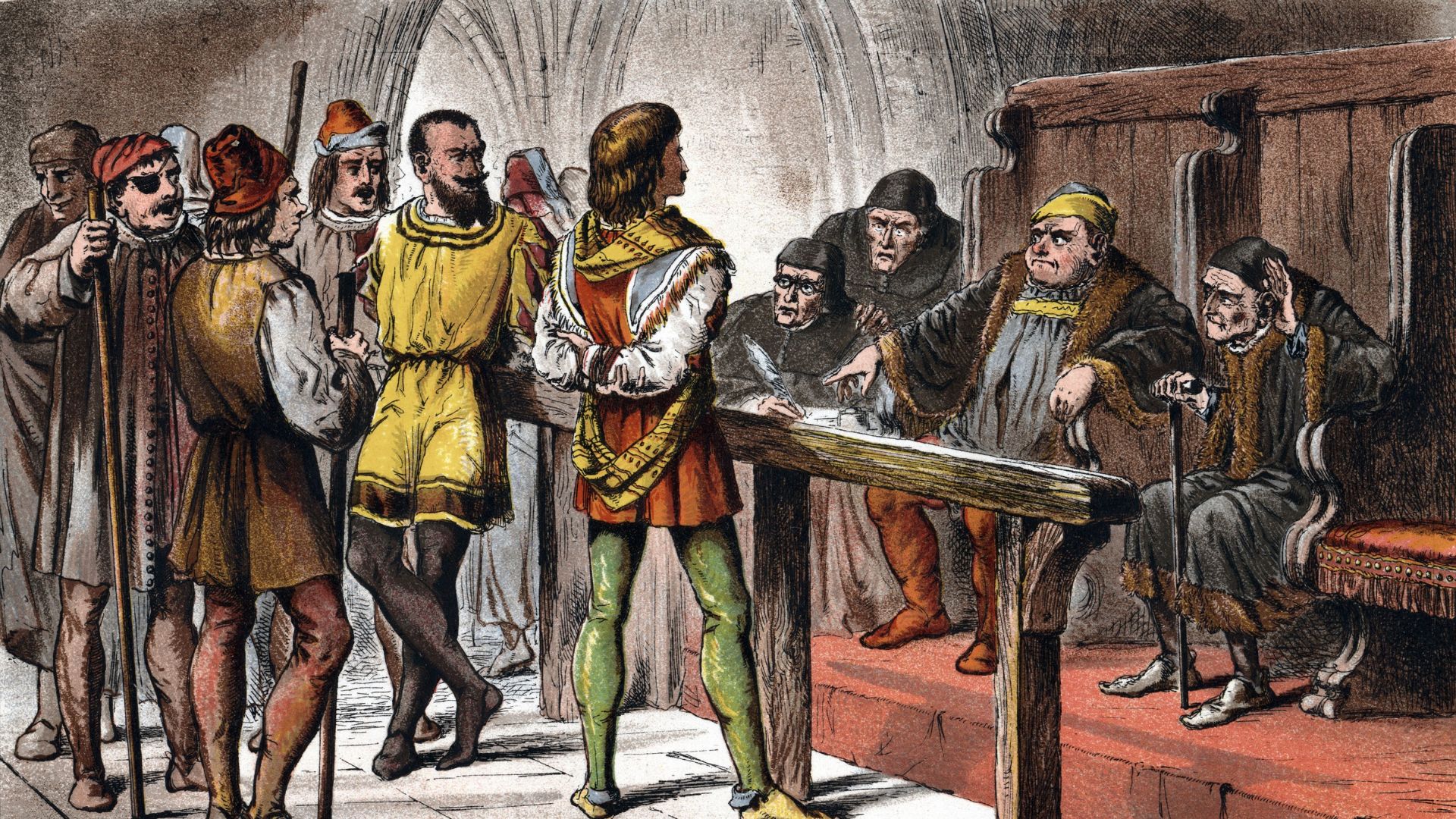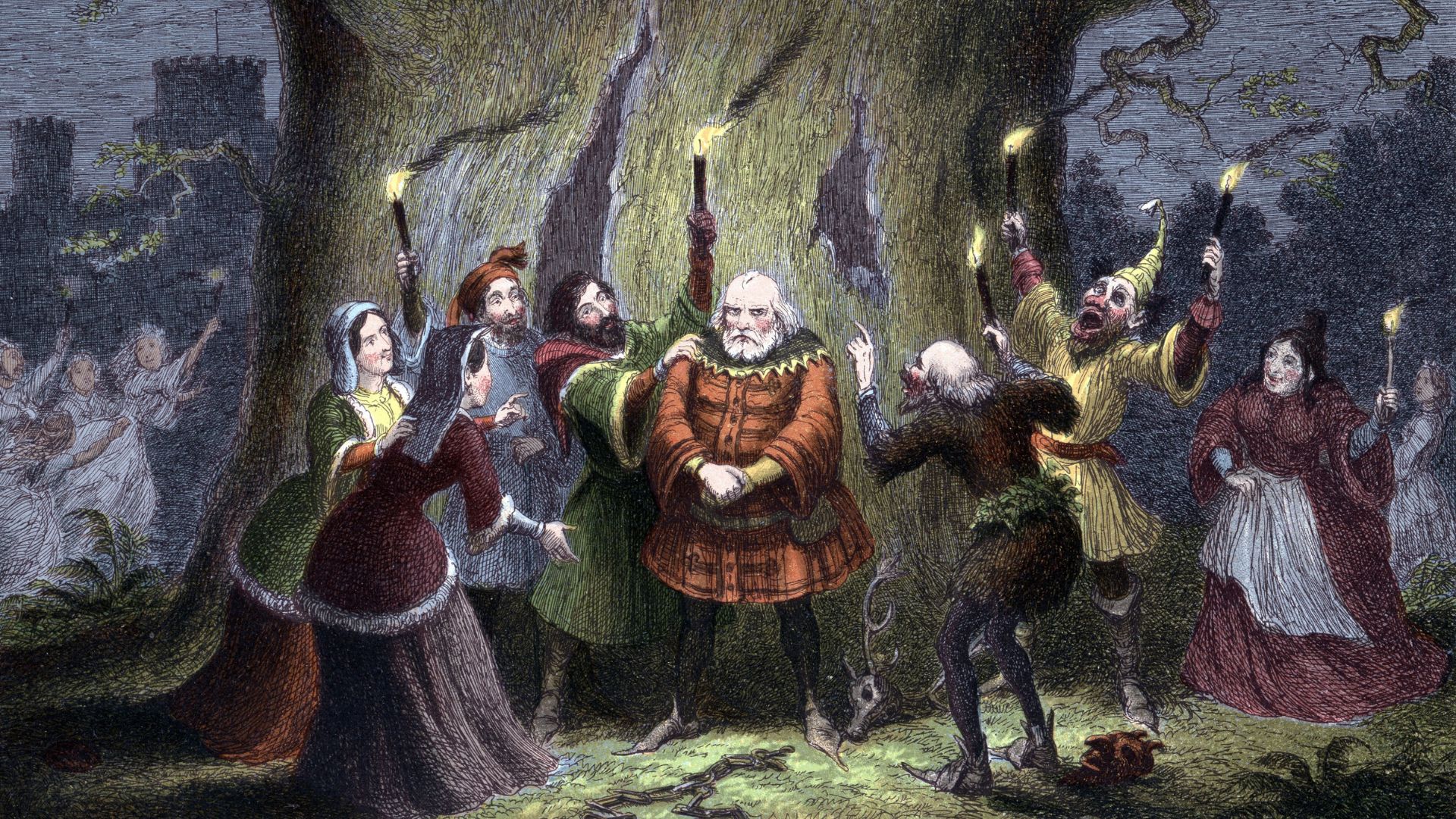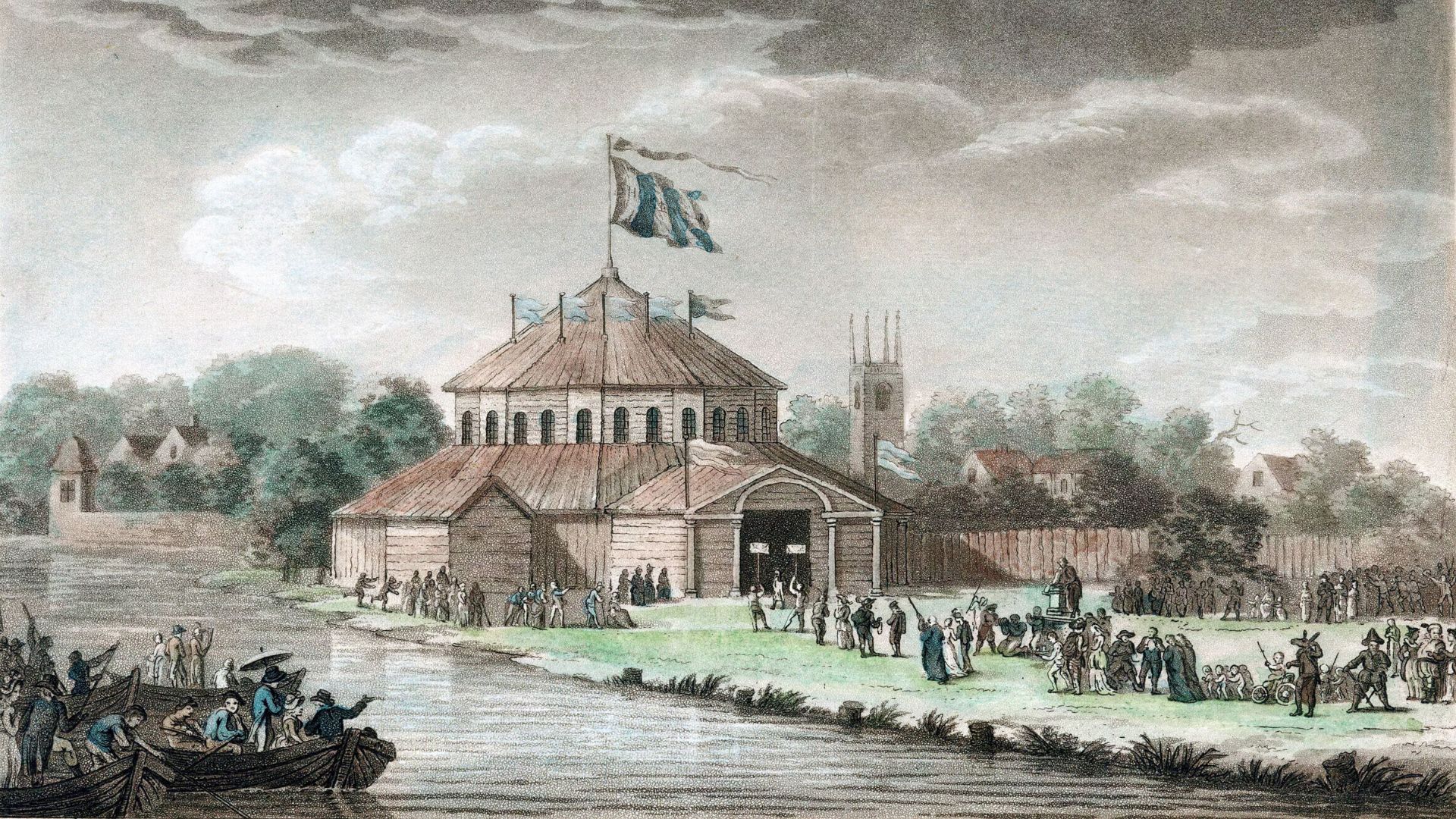
This is part 2 of a 4-part Shakespeare in the Classroom blog series. With the help of several Shakespeare experts, APT Education Specialist Cody Carlton shares his experience as a former theatre director and classroom educator to help us understand the bard 's enduring legacy and how students can connect with the over 400 year-old literary icon.
ACT 3: Teaching Shakespeare at Every Grade Level
Every year, teachers face the same challenge when introducing Shakespeare: Students mumble through monologues, stumble over unfamiliar words, and read with all the enthusiasm of a kid being forced to write an apology letter. Why? Because Shakespeare wasn’t meant to be read like a novel—he was meant to be performed.
“Shakespeare should be taught in a way that allows students to interact with it as it was intended: as a performance," Jason Bozeman, a high school English and Theatre teacher, says. "When students experience the words as actors instead of as readers, they can focus on intention and meaning rather than just words on a page.”
That’s the secret: Shakespeare is an experience. If students are just sitting at their desks, reading in monotone, they’re missing the humor, the action, the tension, the spectacle—everything that makes Shakespeare great.
So how do we bring Shakespeare to life at every grade level? Educators across Alabama have found ways to ditch the dull and make the Bard accessible—and they have some incredible insights on how to do it.
Elementary School (K-5): Making the Bard Bite-Sized
Shakespeare for young kids might sound intimidating, but at its core, Shakespeare’s work is about storytelling—and kids LOVE stories. The trick is to tap into the elements of Shakespeare that already appeal to them: magic, comedy, villains, heroes, and larger-than-life emotions.
1. Storytelling & Role-Playing
Instead of starting with the text, start with the story. Gather students around and tell them a Shakespearean tale—make it exciting, use voices, throw in some audience participation.
Emily Duncan, co-founder of The Shakespeare Project, theatre director, and educator, believes that getting kids excited about the story is key: “Many folks have ‘Shakes-fear,’ and it can feel like another language to them. They’re used to hearing peers read it monotone without complete understanding of the story. But once students and teachers see and understand the context and root of the story, the fear vanishes.”
One way to immerse younger students in the story is through hands-on performance, even in small ways.
Anna Peyton, a homeschool mom and Army veteran, has found a creative way to captivate younger learners at home: “In our homeschool, we incorporate performance-based learning (lower grades) using wooden peg people as our cast of characters. As we read, we pause and check for comprehension while enjoying acting out the scenes. This has been a big hit for us and makes our Shakespeare lessons a favorite.”
By acting out the scenes with simple figures, younger students relate with the story in a playful, interactive way making Shakespeare feel like an adventure rather than an assignment. Once the story clicks, let kids act out scenes with costumes, props, and over-the-top dramatic gestures. The goal isn’t to be perfect—it’s to make Shakespeare feel alive.
2. Shakespeare in Pictures
Some students learn best visually. Have them illustrate scenes rather than just read them. Peyton has also found that visual storytelling helps make Shakespeare more accessible for her students: “Besides acting out the stories, any particular scenes that stand out to the students we either discuss or create a narrative piece of artwork. Every (piece) is accompanied by an oral or written narration.”
By drawing key moments, students process the emotions and stakes of the story in a new way. Ever imagined a third grader’s drawing of Macbeth? It’s both adorable and mildly terrifying. Encourage students to illustrate their favorite scenes, create comic strips, or even design character posters showing how they imagine the setting, costumes, or emotions of a moment. Shakespeare’s plays were meant to be experienced—and for some students, that experience starts with seeing it before they ever read a word.
3. Rhyming Games
Shakespeare was a master of rhythm and rhyme—so why not turn his words into a game? Challenge students to create their own rhyming couplets, or turn his insults into a Renaissance-style rap battle. At this age, it’s not about understanding every word—it’s about immersing kids in the rhythm, the fun, and the theatricality of Shakespeare’s world while building foundational literacy skills.
Middle School (6-8): Bringing Shakespeare Off the Page
Middle schoolers are ready for a challenge, but they still need engagement and relevance. This is where performance-based learning becomes essential. If a student reads Puck’s monologue in a flat, monotone voice, they’ll probably never remember it. But if that same student performs it, with movement, gestures, and energy, suddenly the words come to life.
Cameron Williams, Director of Education at the Alabama Shakespeare Festival, urges teachers to spark curiosity with students from the first moment they enter the classroom.
“DO NOT plan to read the whole play aloud sitting in desks...Perhaps if you're studying the Scottish play, set up a crime scene of Duncan's murder on the first day of reading. Use exposition and plot points from the script to give the students clues...The further into your imagination you're willing to go, the more the piece will come to life for your students.”
Here’s some other ways to make that happen:
1. Mini Performances: Give students short scenes or monologues to perform. Let them use props, move around the room, and experiment with emotions. Suddenly, they’re not just reading Shakespeare—they’re embodying it.
2. Rewrite the Ending: Encourage students to rewrite famous scenes with a twist. What if Juliet’s plan worked? What if Macbeth ignored the witches? Let them perform their versions.
3. Make It Personal: Ask students questions that relate to their own lives:
- Have you ever been underestimated? (Henry V)
- Has someone ever manipulated a situation to their advantage? (Othello)
- Have you ever felt torn between two worlds? (Romeo and Juliet)
The more Shakespeare feels like their story, the more they engage with it.
High School (9-12): Critical Thinking & Modern Connections
By high school, students are ready to analyze, debate, and connect Shakespeare to their own lives. Shakespearean scholar and author Dr. Carmine Di Biase suggests breaking down words students already know:
“Gather a few words that seem familiar to everyone, such as ‘luxurious,’ then show the students where the words appear in Shakespeare, and how we need to relearn the word because it means something different there. ‘Luxurious’ was, to Shakespeare, synonymous with ‘lecherous.’ And when students realize this, they also realize that their understanding of the same word in its modern use is deepened.”
By showing students how words evolve, Shakespeare becomes less like a relic from the past and more like a key to unlocking language itself. One way to make this discovery engaging is through interactive vocabulary-building activities:
1. Shakespearean Word Detective: Give students a list of words Shakespeare used differently than we do today (luxurious, brave, silly, mad). Have them research the original meaning and then write a modern translation of a Shakespearean passage using today’s definitions.
2. Debates & Discussions: Get students arguing about Shakespeare’s biggest dilemmas:
- Was Brutus really a villain, or was he a patriot?
- Should Hamlet have just gone to therapy?
- Was Iago an evil genius, or was Othello just gullible?
Encouraging students to debate and analyze Shakespeare makes them invested in the stories.
3. Film & Multimedia: Show students how Shakespeare adapts across time:
- Compare traditional performances (Much Ado About Nothing with Kenneth Branagh) to modern retellings (Romeo + Juliet, 1996).
- Discuss how changing a setting changes a story.
The Bard Isn’t Boring—We Just Have to Teach Him Differently
Shakespeare was never meant to be dull. His plays were made for wild, interactive, loud, and emotional audiences. So, let’s teach him that way. Let’s ditch the monotone readings and make Shakespeare an experience. Because when we do that? Students don’t just “get” Shakespeare—they love him.
This is part 2 of a 4-part Shakespeare in the Classroom blog series.







Follow Us